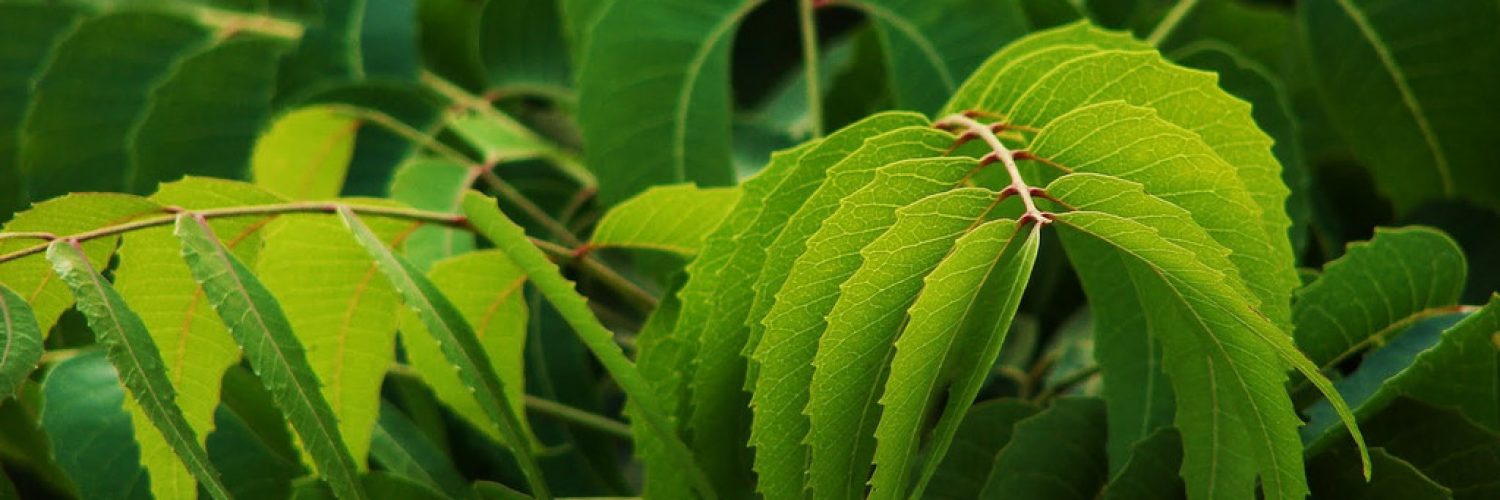
Wonder Medicine
Neem: The wonder medicine:
During the early part of this century, Neem tree was introduced in West Africa where it is valuable as a source of shade and for its medicinal properties. It has become an important source of firewood for the densely populated Accra Plains, and in countries like Somalia and Mauritania it has helped arrest the spread of the Sahara Desert. It is also grown in Saudi Arabia and in the Caribbeans and has been extensively used in afforestation programmes. Besides being able to grow in difficult conditions, Neem has the ability to control farm and household insects.
Researchers in the US Department of Agriculture have been studying this property of Neem since 1972. In laboratory experiments, it has been found that the various parts of this Neem tree has remarkable powers for controlling insects, that entomologists believe that it is now possible to develop safe natural “pesticides”.
Neem leaves contain an ingredient that disrupts the fungi that produce aflatoxin on mouldy peanuts, corn, and other foods — it leaves the alive, but switches off their ability to produce aflatoxin, the most powerful carcinogen known.
Neem products benefit human health.
The seeds and leaves contain compounds with demonstrated antiseptic, antiviral, and antifungal activity. There is also evidence that Neem has anti-inflammatory, hypotensive, and anti-ulcer effects.
Research has shown that compounds of Neem bark are strongly antiseptic. Neem is also effective in taking care of dental hygiene. In Germany, tests have proved that Neem extracts prevent tooth decay, as well as prevent inflammations of the gums.
The crude extract of the oil from Neem seeds can be used for various purposes like heating, lighting, or crude lubricating jobs. Refined, it loses its unpleasant smell and is used in soaps, cosmetics, toothpaste, disinfectants, and various other industrial products without having any harmful side effects.
In conclusion, Neem tree has enormous potential to benefit entire mankind.
Extracted from the bark and leaves of a hardy umbrella-shaped tree, neem can kill infectious bacteria and reduce inflammation and fever.
The neem tree is known in India as “the village pharmacy.” For more than 4,500 years, traditional healers have used the bark, seeds, leaves, fruit, gum and oils for dozens of internal and external medical treatments. The most common historical uses of neem were for treatment of skin diseases, inflammation and fevers. Modern research confirms many of the traditional benefits and has revealed new ones.
Neem has demonstrated antibacterial and anti-inflammatory effects as well as benefits for those suffering from diabetes and cardiovascular disorders. One of the most intensively studied effects of neem is as an insecticide. Few people of the United States are aware of this versatile tree and its fascinating story.
Neem is a member of the mahogany family and is a hardy, fast-growing evergreen tree. It has a straight trunk, long spreading branches, grows to a height of 50 feet or more and up to 30 feet wide. These stately umbrella-shaped trees have fragrant white flowers about one-half inch across and may live for more than 200 years. While native to India, neem grows in many Asian countries, throughout arid zones of Africa and has been planted in tropical areas of the Western world as well. It thrives in poor soil and has deep roots that allow it to withstand long periods of drought.
Many of the historical and modern day uses of neem and neem oil have been to treat external skin conditions. It’s little surprise that when scientists began looking at neem, they found potent antimicrobial activity. Researchers reported the antibacterial effects of the oil from the neem seed against a variety of pathogens (Indian Journal of Medical Research, 1986, vol. 84), and earlier research indicated that a water extract of neem leaves is effective against viruses (Indian Journal of Medical Research, 1969, vol. 57).
Research on the dermatological effects of neem include successful treatment of ringworm and scabies, according to a study from King George’s Medical College in Lucknow, India (New Delhi Evening News, Jan. 29, 1985). Another study showed that a 10 percent extract of the leaves prevented viral skin infection in rabbits and monkeys. Leaf extracts also cured acute eczema and scabies (Antiseptic, 1979, vol. 76).
Anti-Inflammatory Effects
Neem has been used for treating rheumatism and arthritis as well as other inflammatory conditions. Numerous research studies have confirmed the herb’s anti-inflammatory effects including a 1981 study showing anti-inflammatory and antipyretic (fever-reducing) properties of neem when administered orally. In the same year, Indian researchers reported anti-arthritic and anti-inflammatory actions of one of the components of neem called nimbidin (Planta Medica, 1981, vol. 43).
Neem’s anti-inflammatory actions show different types of activity against acute and chronic inflammation. Neem’s strong inhibition of immediate or acute inflammation suggests it prevents the release of inflammation-inducing neurochemicals including prostaglandins. In fact, one 1977 study showed neem extract to be more effective than aspirin in inhibiting prostaglandins (Journal of the West African Science Association, 1977, vol. 22).
This same aspirin-like result may be involved in the fever-reducing effect of neem, documented by some of the same studies, which showed an extract of leaf and bark administered orally could reduce fevers (Journal of Ethnopharmacology, 1985, vol. 14).
One of the more common fevers in India and throughout the tropics is malaria. Research shows neem is toxic to malaria parasites and that it can reduce fevers in malaria sufferers. Both water- and alcohol-based neem leaf extracts were confirmed effective against the parasite P. falciparum (Southeast Asian Journal of Tropical Medicine and Public Health, 1985, vol. 16). Though neem might be effective against malaria parasites, it hasn’t been shown to prevent malaria infection in the body. Neem has also demonstrated some cardiovascular benefits. Studies showed a “profound and dose dependent” effect in reducing blood pressure and also in reducing arrhythmia, or irregular heartbeats (Journal of Pharmaceutical Sciences, 1978, vol. 67). The versatile herb may also favorably affect the health of diabetics. In a limited 1973 clinical trial, neem enabled diabetic patients to reduce their dosage of insulin by up to 30 to 50 percent without significant rise in blood sugar (Medicine and Surgery, 1973, vol. 13). Further research showed that oral use of leaf extracts reduced blood sugar in rabbits, rats and guinea pigs (Journal of Pharmacy and Pharmacology, 1974, vol. 26, suppl. 111).
Neem’s Insecticidal Use
Neem oil is effective against insects in many ways. It’s apparently so distasteful that most insects won’t eat a plant treated with it, but if they do, a deadly effect occurs. Neem, harmless to humans, disrupts insect hormones, preventing the bugs from shedding their outgrown skins. The insects are thus prevented from growing and eventually die. Neem is effective against at least 200 insects and requires no sophisticated extraction or preparation equipment. Use of neem itself is bound to increase as both its medicinal and insecticidal benefits become more widely known.

 by
by